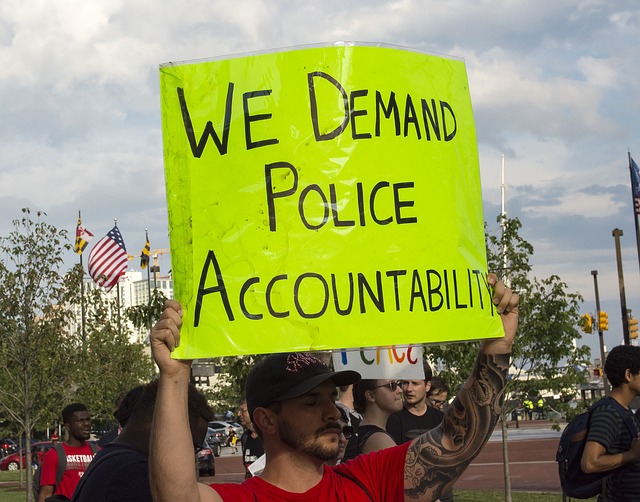@BryanRenbaum
It has been exactly one year since the death of George Floyd at the hands of a Minneapolis police officer.
The now-former officer has been convicted on murder and manslaughter charges and is scheduled to be sentenced next month.
Maryland has passed landmark police reform legislation and a handful of other states have followed suit.
A key component of Maryland’s police reform package requires all officers in the state to wear body cameras by 2025. While some jurisdictions have already done so, Howard and Carroll counties are among the jurisdictions that have decided to wait until the statutory deadline to implement the policy.
Irrespective of legislation, police killings of unarmed African-Americans still occur both in Maryland and throughout the nation and in many of those cases, the officers responsible have not been charged.
The anniversary of Floyd’s death will for many be a time of reflection and a time for questions.
What lessons can be learned from that tragic event? Is enough being done to prevent similar acts from occurring? And how much policing is necessary to keep the public safe?
“The broader lesson is that the media attention on events like this and the fact that when policymakers and activists and impacted communities come together we can actually make some real change,” Sen. Will Smith (D-Montgomery) told MarylandReporter.com on Tuesday.
Smith is chair of the Senate Judicial Proceedings Committee and played a key role in the passage of the police reform package. He added: “And we started that conversation and did that in the General Assembly with the most comprehensive and consequential police reform in our state’s history. And I think that serves as a national model. That does not mean that our work is done. But I think with focused effort, tragedies like the death of George Floyd can be used as a touch-point for change.”
Smith said he does not believe it is necessary to have multiple police departments patrolling the same jurisdictions, which is a common practice in many parts of Maryland. The state has more than 140 law enforcement agencies and more than 16,000 police officers.
“In my district, there are places where you have the intersection of a state highway in Montgomery County and in a municipality in Takoma Park. And on any given day you can see all three law enforcement elements on patrol.
“But I think the more important question is: How can we limit interactions between the general public and the police? But also how can we furnish the appropriate social response to a particular incident?”
Sen. Jill Carter (D-Baltimore City) sits on Smith’s committee and has been involved in police reform efforts for more than two decades. She praised the enactment of the police reform as the beginning of a conversation about racial inequities in policing.
“There are still many that refuse to recognize extra-judicial killing and excessive force as a vestige of centuries of state-sanctioned violence against Black people. In many ways, the worst enemy of police was the LEOBR (Law Enforcement Officers’ Bill of Rights). It served to protect bad cops and destroy the integrity of the profession. With our recently passed package of police reform legislation, Maryland will move from one of the worst states to perhaps the best and, hopefully, become a model for the rest of the country.”
But not everyone agrees with the legislation.
Del. Brian Chisholm (R-Anne Arundel) said that while the Floyd’s death was undoubtedly “horrific and extremely unfortunate,” the General Assembly may have gone too far with its police reform package.
“I can tell you that Maryland overreacted with some of the police reform legislation. What I have heard from most law enforcement officers is that they are now afraid to do their job, which puts all of us at risk.”
And Chisholm, unlike Smith, said he does believe that it is necessary to have multiple police departments patrolling the same jurisdiction because sometimes the various departments play distinct roles.
Chisholm’s district is served by both the Anne Arundel County Police Department and the Anne Arundel County Sheriff’s Office.
“With the sheriff’s department, their primary goal is the courthouse and the serving of warrants. They are trying to innovate as well on getting some of the warrants that need to be served. And some of the warrants are just people that missed court cases…I know their goal is to serve the warrants in a safe way. So I do not think that using the police department is always the best way to do that because the sheriff’s department can handle the majority of it.”





Recent Comments